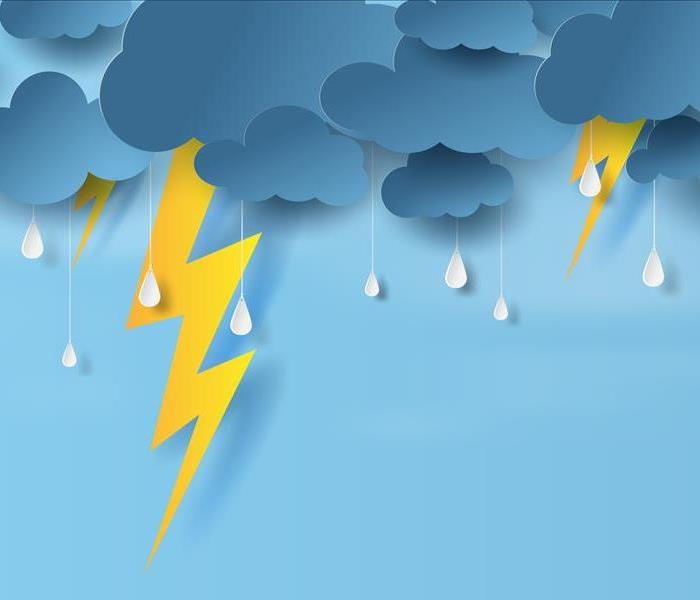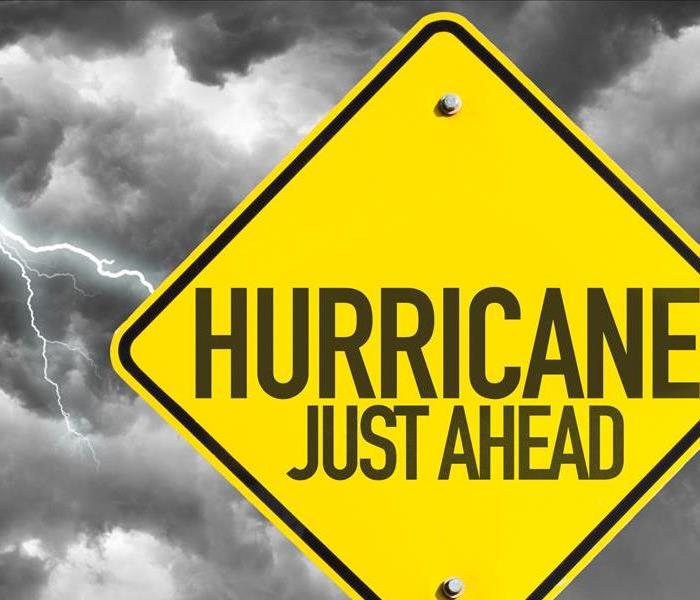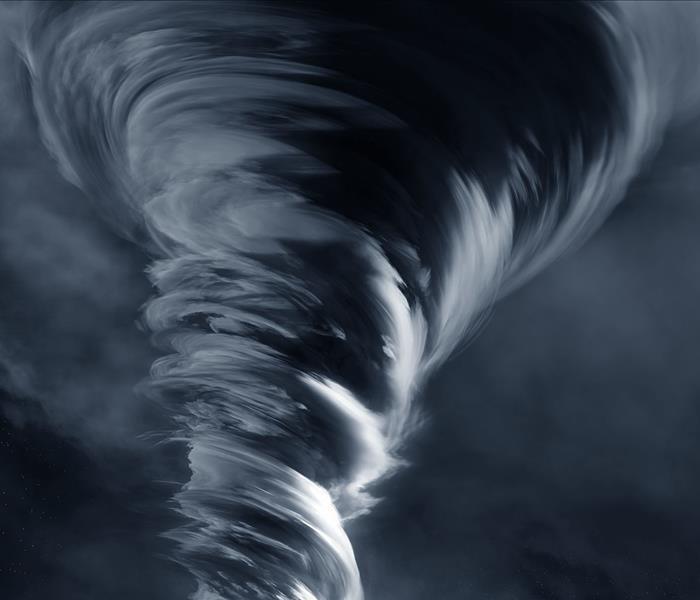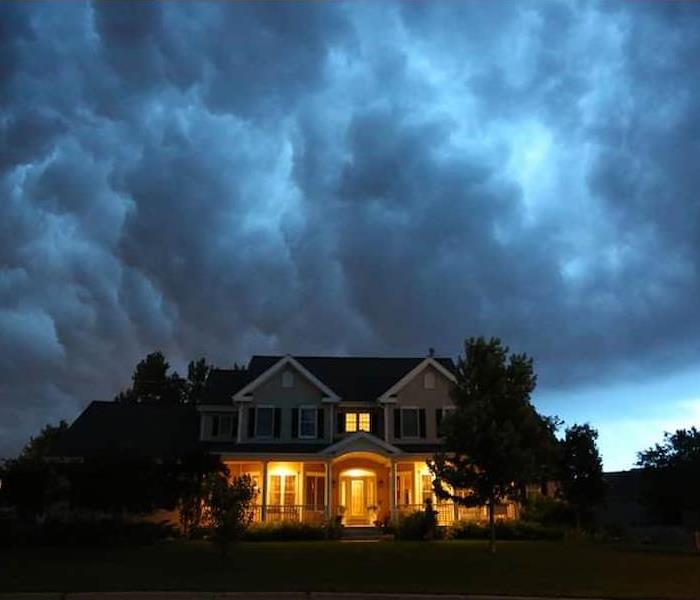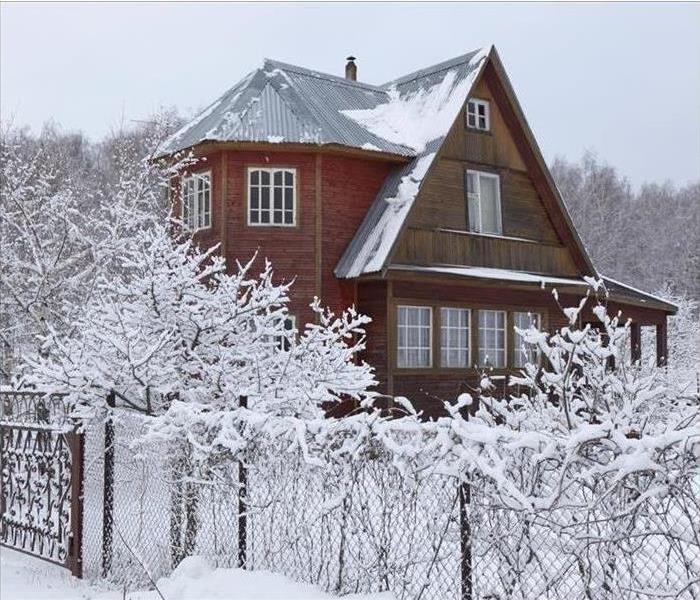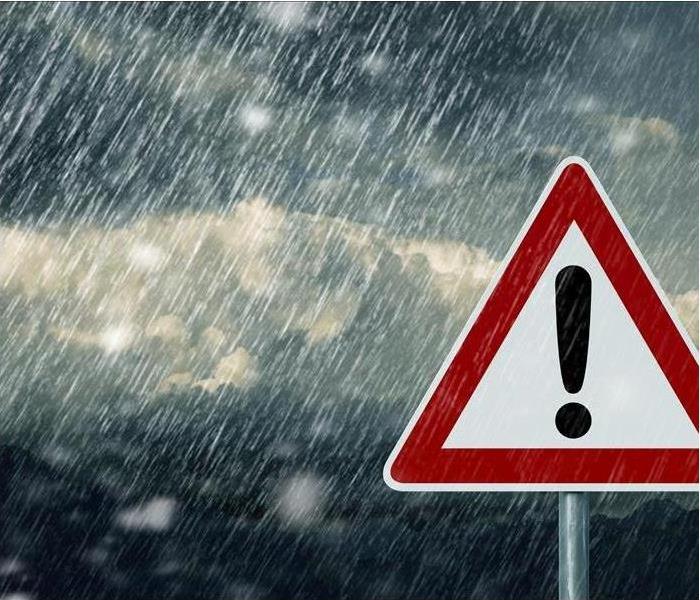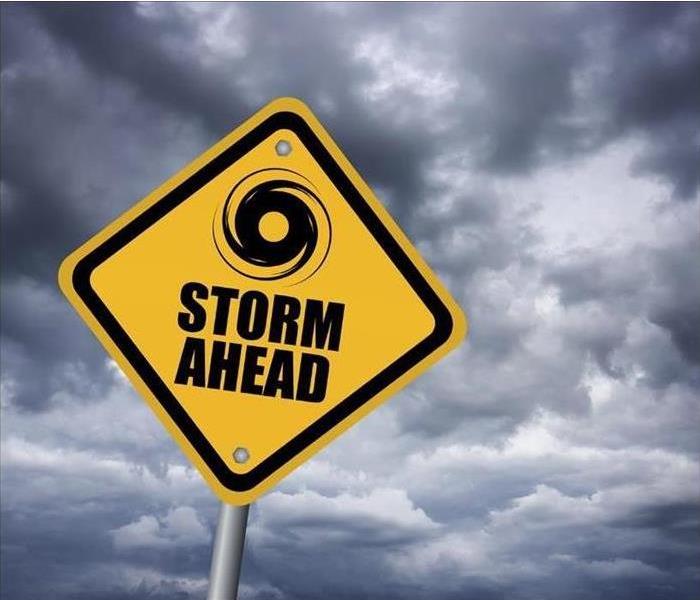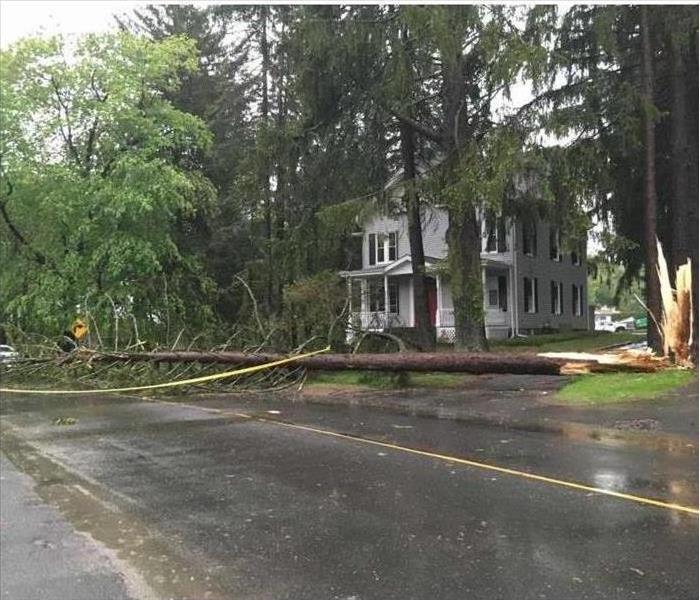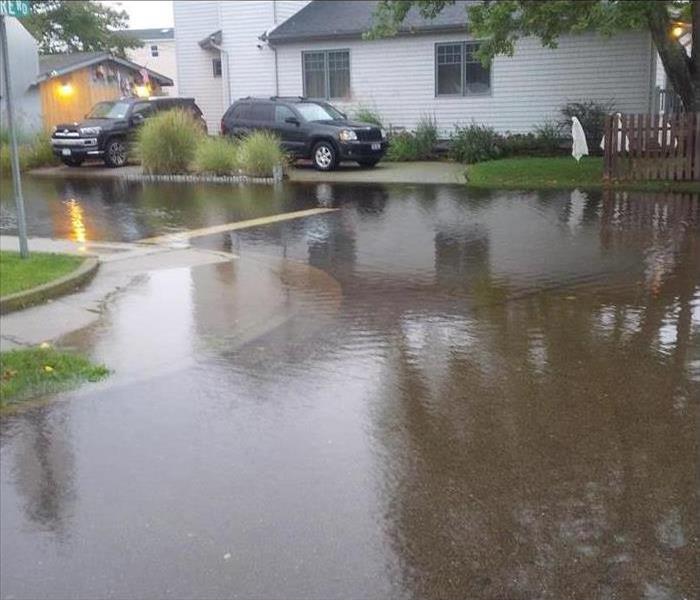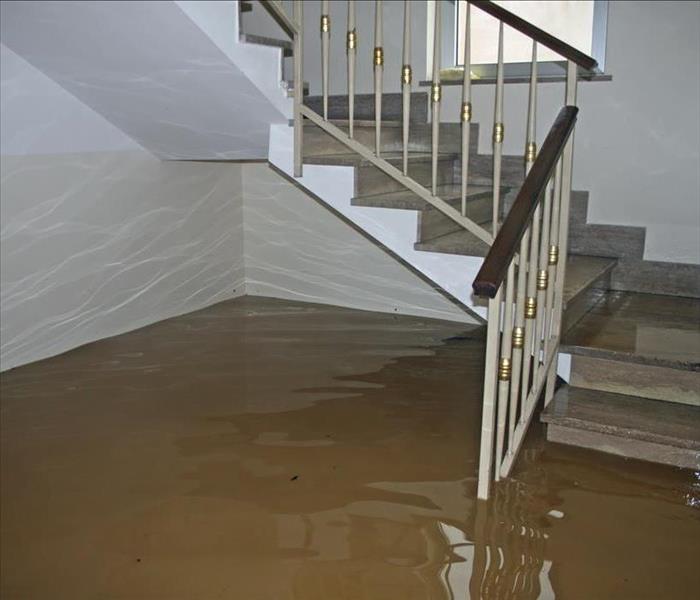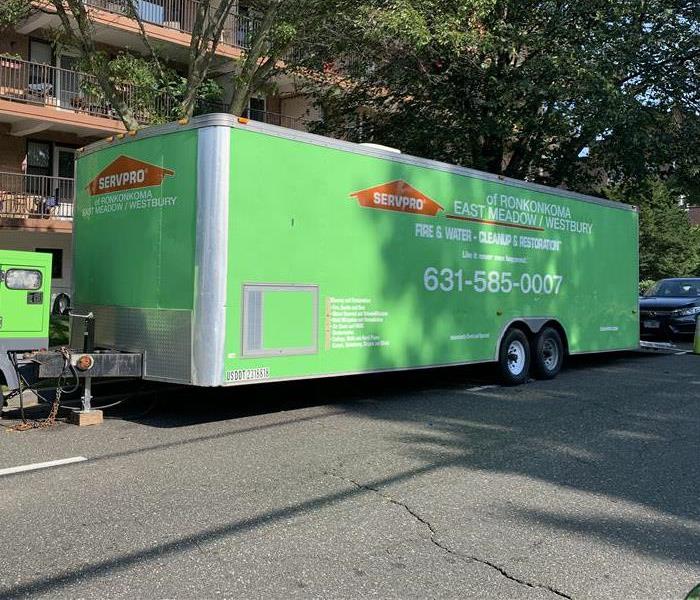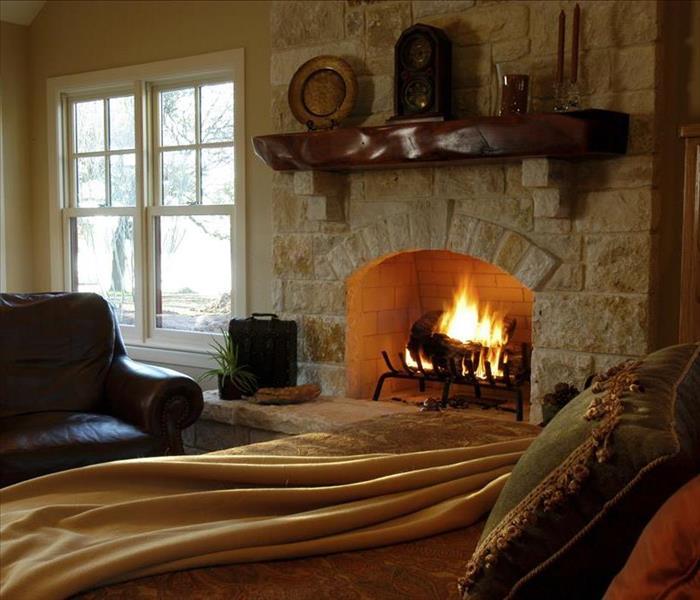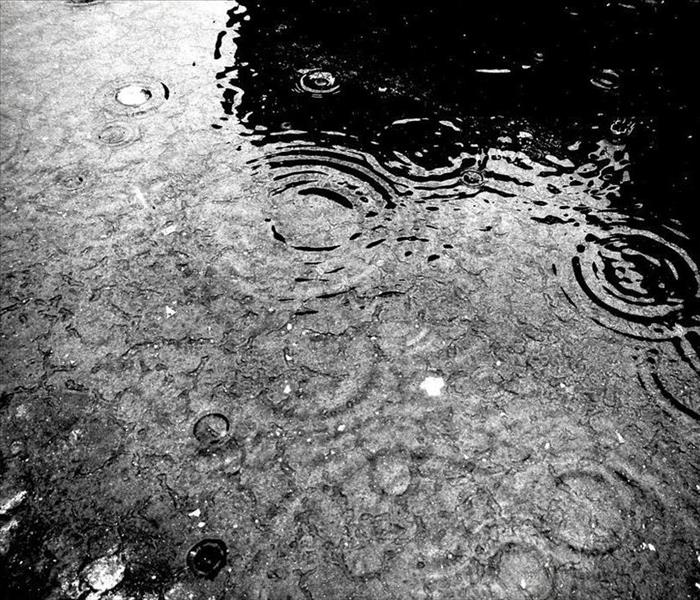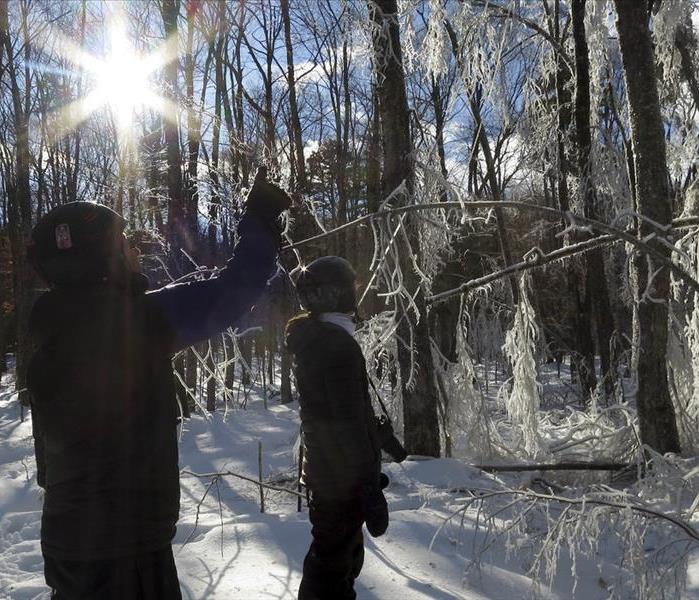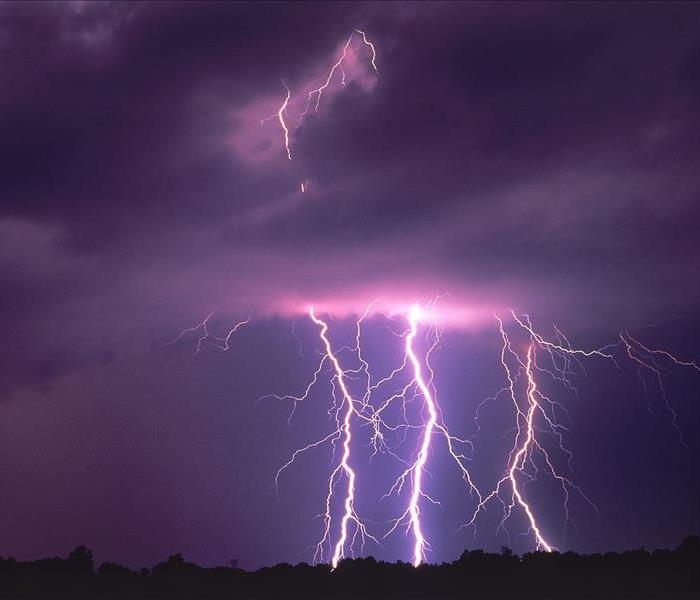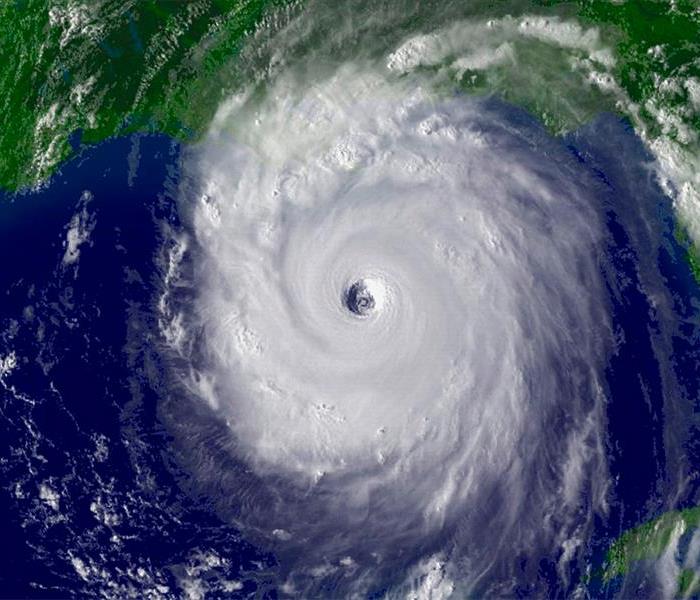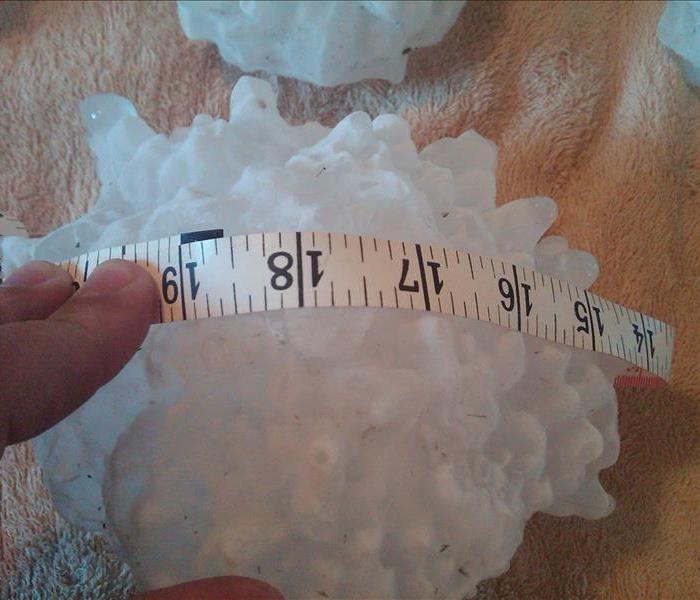Archived Storm Damage Blog Posts
Why are Storms Worse in the Summertime?
5/15/2023 (Permalink)
Severe Summer Storms: A Danger to Nassau County Homes
Summer is a season many look forward to. It is a season filled with long days, warm sunshine, outdoor activities, and adventure. However, there is a downside to summertime that homeowners in Nassau County should be aware of — severe summer storms.
The Factors Contributing to Summer Storm Severity
Summer storms can bring intense winds, lightning, heavy rain, and hail. Unfortunately, these elements can cause significant damage to homes, so it is important to be prepared for the storms that may occur during the summer months.
One factor that contributes to the severity of summer storms is the increased humidity. When the air contains more moisture, it is easier for hurricanes to form and grow. This humidity also increases the likelihood of thunderstorms, which can cause lightning strikes and flash flooding.
Another factor that can lead to intense storms is the heat. During summertime, the heat from the sun builds up in the atmosphere, creating unstable conditions that can transform into thunderstorms. The heat also leads to stronger winds that can cause damage to buildings and structures in their path.
Protecting Your Home
With such destructive storms, homeowners must take precautions to protect their homes. SERVPRO of East Meadow/Westbury is a professional restoration company with extensive storm damage experience. Our highly skilled restoration technicians can get your home back to pre-storm condition — “Like it never even happened.”
If a summer storm damages a homeowner’s property, SERVPRO can provide a range of services. These include water damage restoration, mold remediation, and storm damage cleanup to restore and prevent long-term damage to the home.
Don’t Risk Your Home’s Safety
Don’t risk the safety of your home this summer. Prepare for the storms that may come, and make it a priority to keep your home safe. Contact SERVPRO of East Meadow/Westbury in case of any damage and let us take care of the rest.
5 Ways to Prepare for a Hurricane
5/3/2023 (Permalink)
5 Ways to Prepare for a Hurricane on Long Island
As summer approaches, hurricane season begins to ramp up on Long Island. With Hurricane Ida being the most recent storm that swept through New York, homeowners must be prepared for the potentially destructive weather that may come our way this year.
Here are five ways to prepare you and your loved ones for this hurricane season.
1. Create an Emergency Kit
You should set aside a hurricane emergency kit in case of power outages or severe damage to your home. Items in this kit can include:
- Water bottles and non-perishable foods that do not require refrigeration or cooking
- Medications
- Flashlights and extra batteries
- A first-aid kit
2. Keep Important Documents Safe
Ensure all important documents, such as passports, insurance policies, and deeds, are kept in a waterproof container. This container should be easily accessible for quick evacuation in case of any emergency.
3. Secure Your Home
Secure your humble abode by trimming nearby trees and shrubs to prevent damage from falling branches. Repair any loose shingles or tiles on your roof, and reinforce garage doors. Additionally, purchase some sandbags to keep water out of your home.
4. Make a Plan
Develop an emergency plan that includes evacuation routes and meeting places with family members. It’s always better to be prepared and have a plan in case of a natural disaster.
5. Stay Informed
Stay up-to-date on the latest weather updates by signing up for local news and weather app alerts. Additionally, make sure to follow any evacuation orders issued by local authorities.
Storm Damage Repair and Restoration in Nassau County
In case of any post-hurricane storm damage, SERVPRO of East Meadow/Westbury is here to help. Contact our friendly team of Nassau County storm damage restoration specialists to learn how we can save the day in your home or business.
What You Should and Shouldn't Do During a Tornado
4/24/2023 (Permalink)
According to the National Oceanic and Atmospheric Administration, tornadoes are one of the world's most deadly and destructive weather phenomena. These swirling, funnel-shaped clouds can cause significant damage to buildings, vehicles, and other structures. Although their appearance is rare on Long Island, it's essential to understand some of the dos and don'ts of tornado safety — SERVPRO of East Meadow/Westbury is here to explain.
Do: Establish a Plan
First, it's essential to take a proactive approach to disaster preparedness. This means not waiting until a tornado warning is issued to develop an emergency plan. Instead, it would be best to have a solid strategy for what to do in the event of a tornado. Ensure you have an emergency kit with essential supplies like food, water, and medical supplies. Also, make sure you have a safe and secure location to shelter during a tornado, whether in a basement, storm cellar or reinforced interior room without windows.
Don’t: Take a Risk
One of the most important things to avoid during a tornado is overconfidence. The risks of a tornado are very real and can be fatal. Some might think they can weather the storm without taking proper precautions, but this mindset is dangerous. No one should assume they will be immune to the storm's effects, and everyone should take the necessary precautions to stay safe.
Don’t: Ignore Alerts
Another thing to avoid when faced with a tornado is complacency. Don't dismiss notifications or assume that they won't affect you. Some people might be tempted to ignore the warning signs or wait too long before taking action, which can be disastrous. Remember that tornadoes can form quickly, and it's important to act swiftly when a warning is issued.
Do: Be Extra Cautious
When a tornado warning is issued, there are some practical steps you should take to stay safe. Seek shelter immediately in a secure location like a basement, storm cellar, or reinforced interior room without windows. If you're outside or in a car, try to get to a sturdy building as quickly as possible. Avoid seeking shelter under an overpass or bridge, as this can be even more dangerous. Keep your head down, and cover it with your hands and a blanket or jacket if possible.
Do: Stay In-The-Know
Lastly, it's important to stay informed during a tornado. Stay tuned to local news and weather sources for accurate information about the storm's path and intensity. Avoid spreading misinformation on social media, as this can cause panic and confusion.
Storm Damage Repair and Restoration in Suffolk County, NY
In conclusion, tornadoes are dangerous weather phenomena that should be taken seriously. It's important to be proactive in disaster preparedness, avoid overconfidence and complacency, and take practical steps to stay safe during a tornado warning. Remember that taking action now can make all the difference when it matters. By following these tips, you can protect yourself and your loved ones from the devastating effects of a tornado.
If your home or business sustains storm-related damage, SERVPRO of East Meadow/Westbury is here to help; contact us today at (516) 334-2927.
How to Prepare Your Home for a Hurricane
5/10/2022 (Permalink)
How Do You Prepare Your Home for a Hurricane?
If you live on Long Island, you’re aware of how important it is to prepare your home for a hurricane. And while you may know hurricane preparedness measures like the back of your hand, it’s always a good idea to have a quick refresher course. The Nassau County storm damage cleanup and restoration professionals at SERVPRO of East Meadow/Westbury share some of the most important tips.
Remove Branches and Limbs
Before hurricane season is in full swing, walk around your property and locate any branch or limb that may become dangerous should the wind pick up during a hurricane. If you do not, there’s a chance they could snap and create a very dangerous situation for you and your loved ones. Of course, if you cannot safely remove any limbs or branches yourself, you should seek assistance from a professional.
Tidy Up the Gutters
Believe it or not, your gutters play a very important role: They help keep water away from your home. However, if there’s an obstruction, H2O can begin to collect and seep into your home. As a result, this can lead to water damage and mold or mildew growth, should the issue go unseen. To help lessen the chance of this from happening, you must clean your gutters and remove any lingering debris within them. If you’d like to go the extra mile, consider adding gutter guards to prevent future foliage from settling inside the channels.
Put Outdoor Furnishings Away
Whether it’s a lawn gnome or a lawn chair, put all of your outdoor furnishings away if you know a hurricane is on the way. Unfortunately, if the winds pick up speed, something as seemingly harmless as a patio chair could go airborne and cause damage to your home. If you’re unable to store your lawn furniture away by some chance, consider finding ways to secure them in the ground or on a nearby permanent structure.
Seal Your Windows and Doors
Over time, the elements will eat away at any weather stripping you have placed around doors and windows. To ensure your home is sealed as tight as possible during a hurricane, walk around your property and inspect the weather stripping around your windows and doors. If something looks like it could use some new caulking, don’t hesitate to reapply it as soon as you spot the problem area.
Map Out Your Evacuation Plan
Although this tip doesn’t relate to your home, it’s still crucial to consider. Before a hurricane arrives, you must map out your evacuation plan. Planning ahead of time will keep you and your loved ones calm in an emergency; you’ll know exactly where you need to go and what you should bring with you should local government officials say you need to evacuate your home.
Some of the things you should include in your plan are:
- The location of your nearest emergency shelter
- Various routes you can take to get there
- A list of emergency contacts
- Copies of important documents
- An emergency kit filled with gallons of water, non-perishable food, first-aid supplies, and more
Storm Damage Cleanup and Restoration Services in Nassau County
If your home or business sustains damage from a hurricane or storm, SERVPRO of East Meadow/Westbury is here to help. Our team has the tools and expertise to restore everything to its original state “Like it never even happened.” We can handle it all, from drying water damage to repairing structural damage. If you need assistance with storm-related damages, please call us at (516) 334-2927.
How To Prepare For A Winter Storm
12/30/2021 (Permalink)
It’s common to look at the forecast, see snow and think “I’ll just break out the shovel and rock salt” and claim everything will be ok. Unfortunately, in many cases, that arsenal of goods simply isn’t sufficient for a large snowstorm with a combination of wind, ice, snow and other factors. Fortunately for you, there are many things you can equip yourself with in order to prepare for winter months and the eventual storm coming towards your home or business. Below are a few key tips to consider when preparing for the next big winter storm.
Tarps
As crazy as it might sound, a tarp might be your best friend in the event there’s a ton of leftover ice expected after a storm. Try this: Place a tarp down on your stairs before the snowfall begins. Achor it down with a few heavy items on the corners and wait for the storm to subside. Once over, grab the ends of the tarp and either fold it over itself, or pull it away from the stairs. You’ll be happy to know that your stairs are mostly moisture and ice-free!
Keep Power Nearby
It’s common to lose power during a major storm -- and sometimes, regaining that power can take days, even weeks! Make sure you have adequate power supplies nearby, including chargers, batteries, generators and anything else needed to get you through the storm as it passes -- it can greatly increase livability during the dark times!
A Person On Call
After the storm passes, you might notice damage in your area -- and while it’s unfavorable, keeping your head up and reacting fast is the easiest way to mitigate the issue before it spirals and becomes something much larger. A phone number or contact of someone ready to help can be the quick difference between high costs and just a bit of general cleanup.
If you’re in need of immediate damage restoration for any reason, make sure to partner yourself with a team that can make the situation right the first time. SERVPRO of East Meadow/Westbury has been assisting home and business owners recover from damage for years, and we would be honored to help you! Contact us today and we’ll show you how we can make everything right again. 516-334-2927
How Can Storms Hurt My Home?
10/27/2021 (Permalink)
A spring storm, while somewhat expected, can also strike quickly and hard without warning. A simple afternoon of relaxing outside can immediately turn into a home-soaking downpour leaving everyone within earshot in a panic. For us on Long Island, we know the issues that come with a flash storm -- and unfortunately, maybe the damage as well. Below are a few things that can be done to prevent damage, and what may happen if it isn’t.
Think About What’s Left Open
Remember cutting vegetables and leaving the window open last night? A flash storm ran through town and your entire kitchen counter is now soaked -- great -- now what?! Whether it’s your car or your home, make sure you try and remember to close things after using them; especially if the inside can become damaged or stolen from. A flash storm like this can send tons of water into your home, causing water damage, mold growth in tight places, and bad smells from all angles!
Try and Prepare
Is your home the community pool after a hard rainstorm? What about past experiences with leaking roofing that resembles that of an extra, yet unwanted showerhead? If this is you, make sure to call someone and have it inspected! Collect sandbags or create runoff channels around your home as well as preparation. The last thing you need is more water than you asked for. Everyone loves spending a few extra minutes in the shower; but showering in the living room isn’t exactly a desirable feature.
Always Know Who To Call
If you’ve been on the wrong side of a spring shower and need assistance, the first thing to do is call someone who can help you with the situation as best as possible. Fixing damage and preventing it from happening the next time is something SERVPRO is no stranger to handling -- and your home is just as important as our own.
Should you experience any sort of damage due to a storm, know that there is a local company willing to help you at the drop of a dime. SERVPRO of East Meadow/Westbury has been helping local families and business recover after all types of storms and your case is no different! To receive assistance with storm, fire or water damage, give us a call at 516-334-2927
Prevent A Storm Surge From Affecting Business
10/15/2021 (Permalink)
Flash floods -- we’ve all been there, watching water levels rise at an alarming rate right in front of our eyes. And typically, there’s no telling when or if the issue will stop, which leaves you with the question -- what can I do in a time like this? For businesses who are fearful of storm surges in their area, we’ve got a few things you can do to prevent damage from occurring!
Know Your Entry Points
For the most part, you know any and every place in your business where you can walk in, open the window, and so on. To this point, you know the general areas where a surge of water might be able to make its way into the building if a storm happens. For this reason, make sure your seals are all up to par, and keep a few bags of sand or comparable items nearby to send the water off in a different direction, if possible.
Elevation Space
If you’re a storefront with sensitive items or product on the floor, it might be a good idea to keep those items on something slightly elevated, or on a mobile cart, just in case. This makes everything easy when you begin to see signs of water getting in, as you can move the items away or pick them up to be situated higher than normal.
Call for Help!
When water gets in, so does the possibility of bacteria mold and other major damage. Remember that even in your time of troubles, there’s someone here to help you along the way, and we’re always by your side!
Should you deal with any water damage from a storm this season, don’t panic! SERVPRO of East Meadow/Westbury has been providing homes and businesses with water damage mitigation for over 50 years, and we’re just getting started! For 24/7 emergency service, make sure to keep our number handy and contact us at 516-334-2927, with anything you might need!
Fire Hazards Due To Storms
10/15/2021 (Permalink)
The average rainstorm typically doesn’t seem like it poses too much of a threat, right? Of course not! However, in many cases, everything from a torrential downpour to a full-on hurricane can become an issue. While, you might not think of these situations as important or dangerous, they really can pose a threat to you and your home. See below for things you should be looking out for to prevent fires after a storm!
Open Flames
The power goes out, so naturally the solution might be…. Lighting those awesome and aroma-full candles that haven’t see a flame in years! While this might seem like the best solution for light (and sometimes it is), you need to exercise caution when working with open flames. Make sure these are free of any collected dust, as well as away from anything that could catch fire due to a flickering flame. The need for some sort of lighting is pertinent, but a standing house is even more important.
Electrical Fires
An electrical fire can often be a huge issue for those who’ve suffered power outages. Breakers that have blown, downed wires near water, and so on. These are big issues that should be addressed by staying away and shutting your main source of power off once you’ve seen it happen near you. The last thing you need is a current running live somewhere that may not only pose an electrical threat, but an unwanted fire as well. Make sure that if you can, you call your town and/or power provider to inform them of the downed wire, as soon as possible.
Storm season is here! It’s important to be protected at all costs by someone you can trust. SERVPRO of East Meadow/Westbury has been providing emergency restoration services to homes and businesses for over 50 years. For 24/7 emergency service, make sure to keep our number hand. Connect with us at 516-334-2927 for anything you might need!
Who can help with storm damage?
10/14/2021 (Permalink)
Storms are not only dangerous for us, they can create dangers for our homes too. That’s why it’s important to know key signs to be aware of so you can to prevent damage as best you can. One bad storm can be all it takes to cause serious home damage. Because this can greatly impact the integrity of your home or business, it's crucial that you bring in the right team to help with storm damage, should it occur to you.
Why Us?
Besides being one of the most trusted storm damage remediators around, we have an experienced team made up of water restoration specialists who can help with the inevitable water damage that your house received during the inclement weather. We're first on the scene to help you remediate, rebuild and restore and we do so quickly and efficiently. Our main goal is to help bring your home back to a beautiful state as quickly as possible, allowing you to carry on with your day-to-day processes.
How We Can Help?
Since our team is specifically trained to help you recover from damage causing events like storms, we can deploy almost immediately after your call. We provide a 24/7 emergency service, so no matter what time it is, we can assist you. Home damage is a serious concern of ours, and we want to make sure your home is safe at all times -- especially if you’ll be inside!
What Should Your Plan of Action Be?
After a life altering storm passes, the first step is to make sure everyone is okay and get yourself to safety. If it is safe to do so, you should turn off the electricity and water in the event that there are electrical wires touching the water. If your house is dangerous to inhabit, entering is not advisable -- rather make a call to someone and have them determine if it’s safe to reenter and gather some of your belongings.
At SERVPRO of East Meadow/Westbury, our goal is to relieve your stress by handling the entire process of remediation from start to finish. As soon as you make that call to us, we'll put a plan of action into full gear and get ready to repair your home. If you’re interested in learning more, give us a call at 516-334-2927!
Common Fall Hazards You Should Look Out For At Home
10/8/2021 (Permalink)
Fall is here on Long Island, and while we’re upset summer is over, we’re certainly looking forward to the cooler weather and changing leaves! At home, this might mean turning down the air conditioner, and preparing for a weekend of raking leaves -- but on the flipside, fall comes with a number of examples where the attention you give to your home needs to be turned up a notch. On Long Island, we’ve certainly experienced the hardship of what fall weather can bring, and this year is no different.
Storm Season
No stranger to storms, your home is at risk more than ever during this season. This is when hurricanes run the risk of passing over Long Island, which can bring rain, wind, snow and damage to your home or business. Because of this, it’s important to be aware of weather alerts and take the necessary steps in preventing damage from occurring in the first place. Prepping with sandbags, plywood and other easily purchased items can be the difference between a ton of storm damage and a mild inconvenience.
Trees
With fall comes the colors associated with it, and we know how beautiful Long Island looks during this time. However, when you pair falling leaves with rain and wind, this can quickly become a damage-ridden season in the blink of an eye. Monitor all of your surrounding trees for broken or loose branches and regularly rake up any leaves in the area -- especially if it has rained! These falling branches can damage roofing, cars, and even you; while wet leaves can hoard and cover up moisture that seeps into your home.
Protecting your Nassau County home this season is and should be your #1 priority, and should something happen, help is always around the corner. Whether storm, water, mold or fire damage, SERVPRO of East Meadow/Westbury is at the ready to take on all remediation efforts to get you back on your feet faster! To receive more information, get in contact with us today!
Minimize Storm Damage in your Commercial Space
9/1/2021 (Permalink)
Massive flooding, especially in regions like Long Island, NY, bring devastating impact on the livelihood of its residents and economy. Casualties, destructed crops, damaged properties, livestock losses, defective infrastructure and the rise of waterborne diseases are some of the consequences of floods. Commercial properties, involving millions of dollars’ in investment are also prone to flooding. The costs of rehabilitation, shifting of commercial property from damaged areas to new regions, and relocation of displaced people and employees can divert a massive amount of money from these businesses.
Floods on Long Island like Hurricane Sandy, and others across the country like Harvey, Irma, Michael and Maria have resulted in devastating losses, both residential and commercial, monetary and non-monetary. These losses have been noted to have a monetary loss from $15 - $125 billion.
Causes of Flooding in Businesses
To prevent commercial property and business losses, advance preventative measures can be made to determine and prevent water damage.
- Rising Water
It is one of the biggest risks to island areas like Long Island.
- Moving water
Moving water brings greater risks in areas that are located near rivers or in coastal storm surge areas since it results in much larger lateral forces on the buildings.
- Overtopping
Overtopping, opening of levees, dams and other flood stopping mechanisms, which are made to divert flood water flow to ensure protection, result in more significant flood damages than if these mechanisms were never installed.
- Flash flooding
Flash flooding occurs in almost every region due to slow-moving storms or unusually heavy rainfall arising out of any storm system. This is particularly common on Long Island and the main culprit for commercial property damage on Long Island.
Factors to Determine Property’s Exposure to Floods
- Flood waters must be able to recede. The most common cause of structure flooding is poor drainage.
- Flood waters’ depth, if higher than 3 feet, hydrostatic pressure against walls will lead to cracks in foundations. Resulting in horizontal foundation cracks and potential collapse.
- Increases in water velocity will result in more pressure exerted against the building. Coastal locations are exposed to waves coming from a storm surge.
- Flood water is usually contaminated, containing a lot of hazardous elements like industrial waste, toxins, pesticides, sewage, animal wastes, oils and chemical and non-chemical materials. This contamination breaches flood protection and brings intensive damage to property.
Ways to Tackle Flood
Drainage
The best solution to prevent flooding is to ensure that all drainage systems surrounding the parameter of your building have been installed and operating properly. Compromises in your drainage system can cause devastating damage to your commercial property.
Elevation
Having adequate elevation will prevent against coastal flooding. Safety margin against flooding is enhanced by raising the elevation of the building above 500-year flood elevation. Though, in regions like Long Island, these locations are hard to find.
Dry Floodproofing
Many waterproofing strategies, techniques, systems and materials exist to help seal the building or property’s foundation to prevent water from entering. Protecting the foundation by coating its exterior with a subterranean membrane that prevents flooding waters from entering the structure. This is not a quick fix and can be a complicated process that requires professional expertise.
To know more about the best solutions for minimizing flood damages to your commercial property, call the experts at SERVPRO of East Meadow/Westbury for specialized flood management and emergency restoration services on Long Island at: 516-334-2927
Winter Storms and Preparation
12/14/2020 (Permalink)
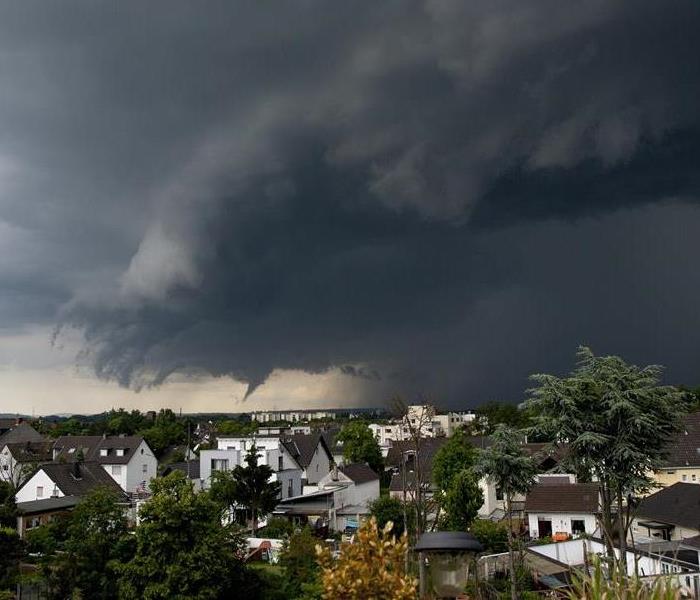 Severe weather can occur in any season!
Severe weather can occur in any season!
On Long Island, especially if you’re near the water, it’s important to know how to prepare both yourself and your home for incoming disaster. This type of occurrence can happen in a flash, and just like that, your belongings and buildings can be at risk. We’re here to help you become well-rounded at knowing what to do in the event of a storm, and how you can safely keep your home, family, business, and belongings safe!
Observe Changing Conditions
We’ve all looked up at the sky at one point or another and said “this doesn’t look good” -- but how many times have you acted on it? In these situations, it’s important to think about what’s happening around you. If you think it looks bad, it might be worth checking one or two weather apps for an update on the current system in your area. This helps give you peace of mind or can help you prep for the weather you’re about to endure at home.
Keep Tools Handy
During adverse storm conditions, you can lose power, watch trees fall, and experience flying debris due to wind. Remember, your home is supposed to be a safe area, however it’s hard to protect it without the right tools! Keeping candles, a generator, wooden boards and flashlights are just a short component of the laundry list of things that you can use to better prepare yourself for what’s coming, or already here.
Have Professionals You Can Call
In the event you sustain damage, it’s imperative that you continue on with keeping your home in tip-top shape, and make any necessary repairs as soon as possible. At SERVPRO of East Meadow/Westbury, our job is to help you after the storm, providing everything you’d need to successfully make it through any ordeal. A company that treats you like family is few and far between, but we’re proud to be one of them!
If you find yourself experiencing damage, make sure the team you call is professional and swift. SERVPRO of East Meadow/Westbury is at the ready 24/7, no matter the emergency. To receive assistance for any type of storm damage, get in contact with us today!
What Can Be Fixed At My Home After A Storm?
10/13/2020 (Permalink)
A storm passes through, and some of your home gets affected by the high winds, rain and flying debris -- we’ve all feared it, and some of us have already been there. For many people who are victim to the damage that comes with a storm, there are a ton of things that have to be done in order to maintain order without sustaining even more damage afterward. And what is comes to the sensitive areas of a home, it’s important to assess them immediately. If your home or business has sustained damage, it’s important to monitor what can and can’t be fixed.
Walls
It’s important to have the walls of your home professionally assessed before having any repair attempts made. The last thing we’d want to see at your home is damage due to water or mold AFTER an attempt to fix has been made. Specifically, when you choose SERVPRO for your work, our job is to investigate each area of damage to determine if the wall or ceiling can be salvaged or needs to be completely replaced. Our promise to you is getting the work done correctly the first time, to prevent any worry and ensure that your home is back to how it was, before the damage!
Ceiling & Roofing
High winds and flying debris can cause damage to your roofing and ceiling fixtures, which not only can let water in, but it an require an entirely new roof, beam, joists and more. It’s important in this instance to have the area carefully assessed. If wind damage was the only thing that occurred and the shingles are missing, you can probably get away with a simple replacement. We’re adamant on making sure that everything you need fixed is properly addressed in order to prevent any further damage.
Flooring
For the most part, heavy storms can cause heavy water, which can easily flood homes and businesses. In many cases, it’s impossible to salvage a floor once it’s been submerged, especially because wood and other materials are great at absorbing all of these materials. When your home or business unfortunately sustains this kind of damage, we’ll look to replace the area with something that matches your remaining flooring in order to minimize the differences pre/post damage. Our goal is to work with you and to make everything as stress-free as possible.
When a storm is barreling towards Long Island, know that there is a local company ready to help you at the drop of a dime. SERVPRO of East Meadow/Westbury has been helping local families and businesses recover after all types of damage, and your case is no different. To receive assistance with water, fire or storm damage, give us a call at 516-334-2927!
Tips to Prepare Your Commercial Property for Winter Weather
10/8/2020 (Permalink)
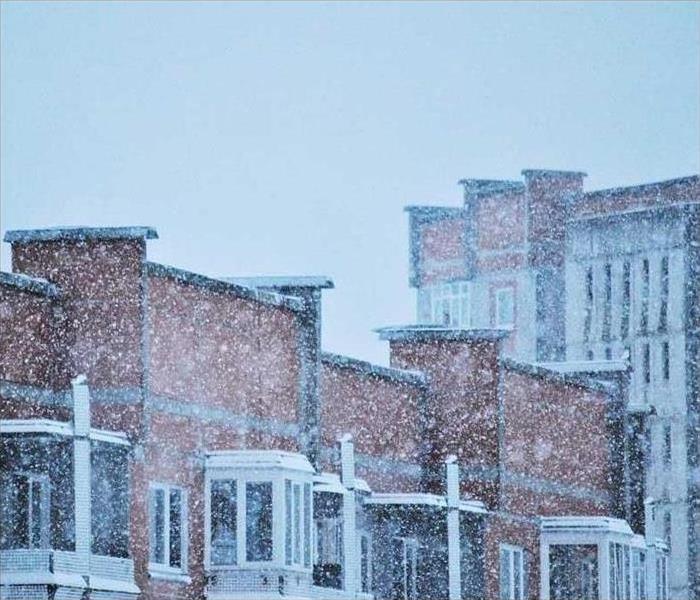 SERVPRO Commercial Building and Property Emergency Restoration Services
SERVPRO Commercial Building and Property Emergency Restoration Services
As per the last few years, it has been observed that winters can be a highly unpredictable time in the United States. Some years, it remains quite moderate with no or negligible snowfall, while other years are just freezing cold, with major blizzards and harsh windy weather. Irrespective of what winter decides to do, building managers and their maintenance staff must make sure that their buildings are fully prepared to embrace winter. This implies taking care of winterizing activities before the harsh and cold weather hits. Following are some great tips to prepare your commercial building for cold weather.
It is never too early to start
The winter is indeed the hardest season in terms of damages and wear-and-tear on your commercial building or property. Ice accumulates in spaces and cracks between masonry and bricks, contributing to the deterioration of façades. The salt eats away the concrete and metal all over your commercial property. Colder temperatures also bring higher electrical and heating bills. Amongst these factors, it is advised that building managers must start early.
Prepare Windows
Windows are surely a weak point for cold air and water. Window sashes and frames must be examined and fixed before winter comes, preferably in the fall season. Sealant and caulking must also be assessed, as it may become weaker with time. In addition, the steel lintel, which is a piece of metal on each window’s head that supports brick above it, must also be checked. If lintels are rusting, they will eventually buckle and fail, leading to weakening of the bricks above them and water penetration. To avoid associated damage, the lintel inspection should be made before the winter season since their repair can take some time.
Allow the heat in
Due to higher energy prices and building managers’ difficulty to keep pace with the tight budgets, conservation of energy has become a critical aspect for both building managers and occupants. A lot of measures can be taken by building staff and occupants to make sure that heat remains inside. Areas where heat can escape must be checked, such as outside doors and windows. Also, check the openings or gaps between the doors’ bottom and the saddle, and the gap around the frame of the doors. For a few cents, you can weather-lock the doors, not just to save money, but to have better comfort level inside the building.
Don’t forget the basement! Check to ensure that no heat or air is escaping. If the building has boiler system, it must be checked and cleaned on an annual basis. The building staff should also monitor fuel consumption regularly.
Keep the cold out
Another critical part of the building to resist the cold is its roof. Flat roofs must have an ultraviolet roof coating. This process should begin in October, since it takes time to apply. This petroleum based coating is relatively inexpensive as it’s simply painted onto the roof. This coating holds reflective silver additives that develops a barrier to insulate the building and protect it from ice and snow. In addition, roof drains must be cleared to avoid blockages that may lead to ice damming, icy build-up and leaks.
Pitching In
Along with building managers, the building occupants can also take few measures to better prepare the buildings for winters. They can lower the thermostats only a few degrees, and alert the manager or staff of anything that needs to be fixed.
It’s wise not to wait until the harsh cold weather strikes to preparing your building for winter. These simple tips are great to keep your buildings protected against the harsh winter weather. If you experience any damage to your commercial building due to the harsh winter weather, call the expert home emergency restoration professionals at SERVPRO of East Meadow/Westbury right away.
Preparing For A Thunderstorm
10/7/2020 (Permalink)
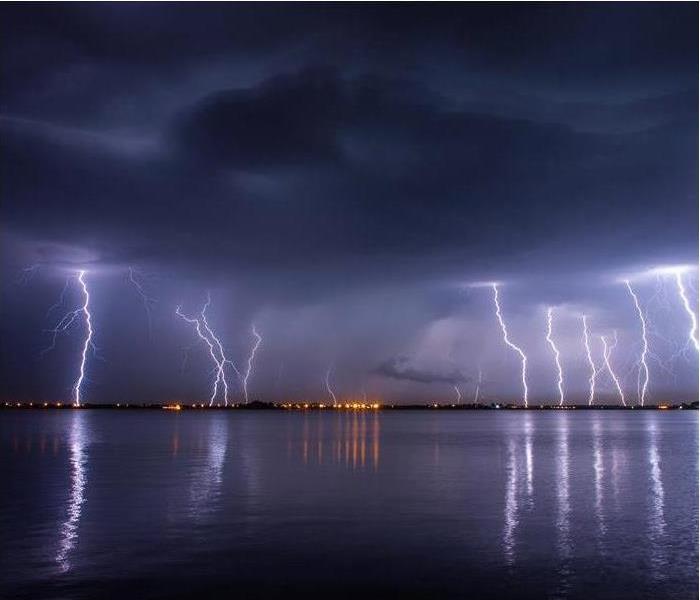 Fall Thunderstorms Can Cause Substantial Damage!
Fall Thunderstorms Can Cause Substantial Damage!
Thunderstorms can be more dangerous than you think! They happen often and can cause a lot of damage to your home. Of course, there are ways to help prevent this. To prepare for a thunderstorm, you should do the following:
- You should build an emergency kit and make a family communications plan.
- Remove dead or rotting trees and branches that could fall and cause injury or damage.
- Secure outdoor objects that could blow away or cause damage.
- Get inside a home, building, or hard top automobile (not a convertible).
- Shutter windows and secure outside doors. If shutters are not available, close window blinds, shades or curtains.
- Unplug any electronic equipment well before the storm arrives.
Here are some facts about thunderstorms!
- They may occur by themselves, in clusters or in lines.
- Some of the most severe occur when a single thunderstorm affects one location for an extended time.
- Warm, humid conditions are highly favorable for thunderstorm development.
We at SERVPRO of East Meadow/Westbury are here for you should you sustain any thunderstorm damage. We have the team, the training, the experience, and the resources to handle any size or scope of thunderstorm damage.
Please contact us at: 516-334-2927
We can be reached 24 hours a day, 365 days a year.
Basic Disaster Kit
10/2/2020 (Permalink)
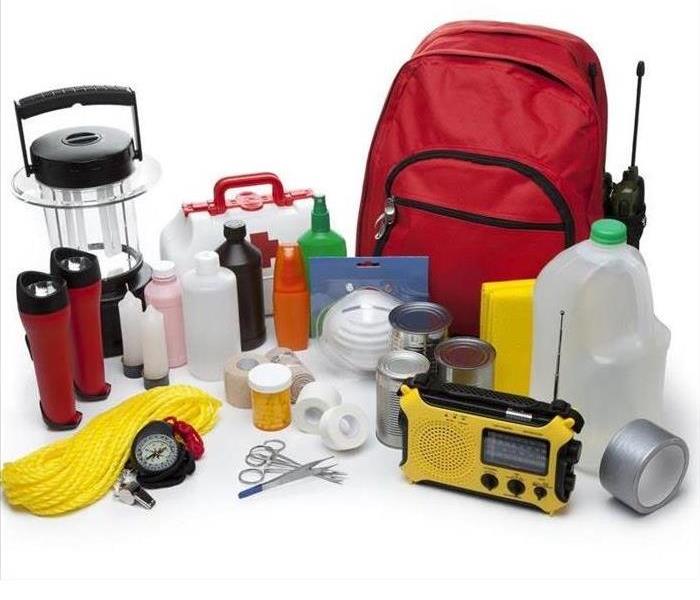 All homes and isolated businesses should have a disaster kit
All homes and isolated businesses should have a disaster kit
Everyone needs to prepare for the unexpected. Your family members and friends might not be together when Disaster strikes. Will you know if your children or parents are safe? How will you find each other? You may have to evacuate your home. You should put together a basic Disaster supplies kit and consider storage locations for different situations.
- Water, one gallon of water per person per day for at least three days, for drinking and sanitation
- Food, at least a three-day supply of non-perishable food
- Battery-powered or hand crank radio and a NOAA Weather Radio with tone alert and extra batteries for both
- Flashlight and extra batteries
- First aid kit
- Manual can opener for food
- Local maps
- Cell phone with chargers, inverter or solar charger
- Tape
- Plastic sheeting
- A whistle
SERVPRO of East Meadow/Westbury stands ready to serve home and business owners when a storm strikes.
When Storms or Floods hits East Meadow/Westbury , SERVPRO is ready!
8/7/2020 (Permalink)
SERVPRO of[[Franchise Name]] specializes in storm and flood damage restoration. Our crews are highly trained and we use specialized equipment to restore your property to its pre-storm condition.
Faster Response
Since we are locally owned and operated, we are able to respond quicker with the right resources, which is extremely important. A fast response lessens the damage, limits further damage, and reduces the restoration cost.
Resources to Handle Floods and Storms
When storms hits, we can scale our resources to handle a large storm or flooding disaster. We can access equipment and personnel from a network of 1,650 Franchises across the country and elite Disaster Recovery Teams that are strategically located throughout the United States.
Have Storm or Flood Damage? Call Us Today 631-585-0007
Hurricane Prep Guide 2019
10/19/2019 (Permalink)
We’ve seen them cause damage before - and they surely will again…..HURRICANES... The dreaded word that most Long Islanders know all too well from recent years -- and while this year is unpredictable like the rest, it’s never too early to know what to look for, how to prep and most importantly, how to stay safe. Here are a few pointers for you to follow in 2019 for this upcoming hurricane season.
Don’t Ever Underestimate
We’ve seen predictions go out the window, and category predictions turn into nothing. But do not get feel like you are overreacting if you prepare. When a hurricane is on the way, always expect the worst, and always remain prepared for it to happen. If this means renting or buying a generator just in case, do it. If this means preemptively boarding up an old window, it’s worth it. The extra work in the beginning is peace of mind and provides you with less stress, when and if the storm does hit.
Follow Protocol
Remember the last few storms? What did you have that proved to be useful? What did you wish you had? Times like these provide you with an opportunity to recall the things that helped you protect yourself and your family the last time something hit -- and will have you ahead of the curve this time around. If you’re in need of more light, make sure to grab flashlights. If your fridge is holding a ton of food, make sure to keep extra ice in the fridge to keep it all cold. These things are critical and just might save you a ton of money.
Breathe
The reality of a hurricane is stressful on everyone, and you’re certainly not alone in your thoughts. For this reason, make sure you’re taking the time out to keep everyone safe, and understand that for the most part, things may be a bit out of your control. Your preparation for the storm and what happens after is the most important -- and that’s what you should focus on. When the dust settles, we’ll be there to help you when you need us.
Hurricane season is finally here -- and so are we to help you. SERVPRO of East Meadow/Westbury has been providing homes and businesses with water damage mitigation for over 50 years, and we’re just getting started! For 24/7 emergency service, make sure to keep our number handy and contact us at 516-334-2927, with anything you might need!
Fire Hazards Due To Storms
10/16/2019 (Permalink)
Your average rainstorm typically doesn’t seem like it poses too much of a threat, right? Of course not! However, in many cases, everything from a torrential downpour to a full-on hurricane can become an issue. While, you might not think of these situations as important or dangerous, they really can pose a threat to you and your home. See below for things you should be looking out for to prevent fires after a storm!
Open Flames
The power goes out, so naturally the solution might be…. Lighting those awesome and aroma-full candles that haven’t see a flame in years! While this might seem like the best solution for light (and sometimes it is), you need to exercise caution when working with open flames. Make sure these are free of any collected dust, as well as away from anything that could catch fire due to a flickering flame. The need for some sort of lighting is pertinent, but a standing house is even more important.
Electrical Fires
An electrical fire can often be a huge issue for those who’ve suffered power outages. Breakers that have blown, downed wires near water, and so on. These are big issues that should be addressed by staying away and shutting your main source of power off once you’ve seen it happen near you. The last thing you need is a current running live somewhere that may not only pose an electrical threat, but an unwanted fire as well. Make sure that if you can, you call your town and/or power provider to inform them of the downed wire, as soon as possible.
Storm season is here! It’s important to be protected at all costs by someone you can trust. SERVPRO of East Meadow/Westbury has been providing emergency restoration services to homes and businesses for over 50 years. For 24/7 emergency service, make sure to keep our number hand. Connect with us at 516-334-2927 for anything you might need!
When a storm hits, SERVPRO of East Meadow/Westbury is Ready!
10/15/2019 (Permalink)
SERVPRO of East Meadow/Westbury specializes in Storm and Flood damage Restoration. Our crews are highly trained and we use specialized equipment to restore your property to its pre-storm condition. Whether you've experienced storm damage which can include, but is not limited to water damage, structural damage, fires or mold, we're capable of mitigating the issue with meticulous effort.
Since we are locally owned and operated, we are able to respond quicker with the right resources. A fast response lessens the damage, limits further damage, and reduces the restoration cost.
When storms hit, we can utilize our resources to handle a large storm or flooding disaster. Although 2019 has been a rather slow season for major storms thus far, there is always the possibility of an occurrence late into the season. With this in mind, make sure you are fully prepared at all times and know who to call in the event of a disaster.
Have storm or flood damage? Call us today at 516 334-2927
Winter Storms That Can Damage Your Home
1/8/2019 (Permalink)
Living in the Northeast means we can see a lot of different kinds of storms. What might start out as something small can quickly ball into something quite damaging. Because of that, it's always an excellent idea to make sure our homes are prepared for any sort of storm that rears its ugly head. For those who are curious about what kind of storms can cause the most home damage and water damage, this article will go over three main types.
Hurricanes
It's to no one's surprise that a hurricane can pack quite a punch. Even for those who aren't living right on the coast, a hurricane can have a large effect on the surrounding area with extremely violent storms. The strong winds and rain that comes with these storms, can put the protective measures of your home to the test. Roofs can be removed, siding can be stripped and windows can be damaged, letting in water and causing a whole slew of water damage to the surrounding areas. They're dangerous and deadly.
Noreasters
While you may have heard of Noreasters from legend, they're more common than you might like to think. These are cyclones taken to the max that manage to reach land. Wind and rain are common staples of a Noreaster. They also typically emerge in the Winter and Spring months, though just like any other weather, they can happen at any time. The wind from these cyclones is especially adept at causing home damage.
Wind/Rain
Besides just the extremely dangerous weather anomalies, the Northeast area can see its share of heavy storms, too. These storms can sometimes be just as powerful as any Noreaster or hurricane. They can cause your roof to leak and damage the interior of your home. You should never underestimate the power of a simple storm.
Dealing with the reality of home and business damage can be devastating, and we know first hand how hard it can be to return to normal life while this is going on. At SERVPRO of East Meadow/Westbury, our goal is to relieve your stress by handling the entire process of remediation from start to finish. If you’re interested in learning more, give us a call at 516-334-2927!
How To Prepare For Summer Flash Storms
8/7/2018 (Permalink)
Picture this: One minute you’re tending to the garden outside, the windows are open in the house, and everything seems fantastic. The next minute, a flash storm is clouding the sky and the rain begins to unload ferociously onto your street -- what do you do? For many of us on Long Island, we’ve experienced the wrath of a flash storm -- and unfortunately, maybe the damage as well. With that in mind, knowing how you can prepare for something like this is extremely important! If you know ahead of time what you need and how WE can help, should something occur that is more than anticipated, it can save you from expending a lot of time and energy and from experiencing some heartache.
Don’t Leave Things Opened
Have you ever gone outside the morning after a storm only to realize you left your car window open? It’s certainly happened to the best of us -- but it can be prevented! Whether it’s your car or your home, create a habit to double check that you haven’t left things open; especially if the inside can become damaged. In a storm, a closed and sealed window can be the difference between no damage and endless cleaning for days after.
Prepare Your Home
Is your home’s area known for flooding or pooling water? If so, make sure you take the necessary measures to prevent it from happening during the next storm. Keep sandbags and other items close by so that during the next storm, you’re ready with whatever you need in order to prevent damage from occurring when you need it least.
Always Know Who To Call
Have you experienced damage to your home or business due to a flash storm? Unfortunately, this can happen at any moment. Should it happen to you, it’s important to make sure that you’re prepared with everything you need in order to have it remedied ASAP! SERVPRO Of East Meadow/Westbury is committed to helping home and businesses owners on Long Island get back on their feet and their space to look like it never even happened!
If you experience any sort of damage due to a storm, know that there is a local company
willing to help you at the drop of a dime. SERVPRO of East Meadow/Westbury has been helping local families and businesses recover after all types of storms and your case is no different. To receive assistance with storm, fire or water damage, give us a call at 516-334-2927!
How to Prepare your Home for Hurricane Season
10/2/2017 (Permalink)
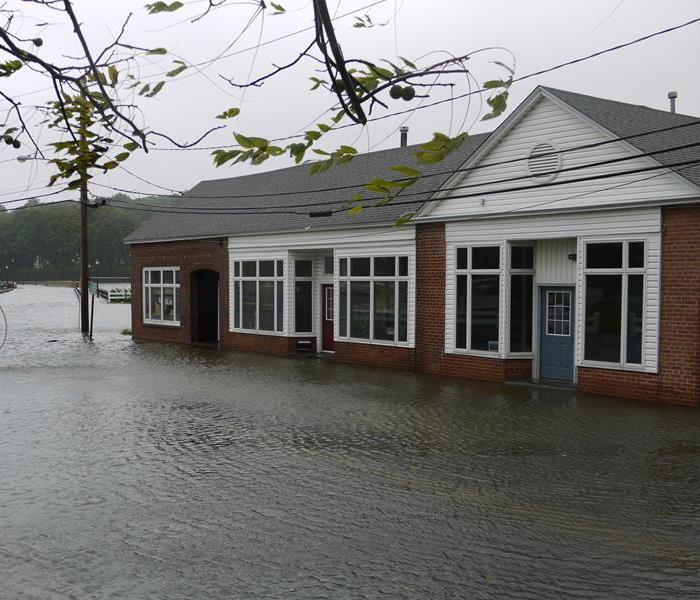 SERVPRO of East Meadow Westbury is #1 company on Long Island for hurricane and storm damage clean up.
SERVPRO of East Meadow Westbury is #1 company on Long Island for hurricane and storm damage clean up.
How to Prepare your Home for Hurricane Season?
The third quarter of the year has just begun and if you live in a country having frequent hurricanes in the season, it is the high time to get your home prepared to avoid potential losses. Getting your home prepared for hurricanes takes money and time, but since the storms are still weeks away, you can reduce your potential expenses by early planning. The measures you take to prepare your property for expected hurricanes, safety-proof landscaping and plan insurance coverage, make you and your family safer in the season and in years to come.
Understanding Hurricanes Basics
Hurricanes, also called typhoons and cyclones, are high-scale storm systems developed over the oceans or seas, striking lands. They usually accompanied with heavy rainfall, high-speed wind, flooding (inland & coastal), storm surfer, tornadoes and rip currents. The United States, especially all Atlantic and Gulf of Mexico coastal areas, the U.S. Virgin Islands, Puerto Rico, Hawaii, Pacific Coast, states in Southwest and Pacific U.S. areas, face coastal storms, heavy rains, floods and hurricanes every year. The Atlantic hurricane period starts from June, running till November end, with peak periods from mid of August till October.
Getting Your Home Prepared
There are numerous ways to get your home prepared to withstand the downpours and high-velocity winds brought by hurricanes. Some are very easy to adopt. For instance, cleaning our gutters, repairing leakages, creating indoor storage spaces for putting outdoor furnishing under shelter etc.
Fasten the roof of your home to the home’s frame by using hurricane clips or straps. This reduces potential roof damage.
- Use Head & Foot bolts on doors
Putting head and foot bolts on your entry doors give them extra protection against rain and wind. Install bolts both at the top and bottom.
- Use Window Covers & Storm Shutters
Commercially made windows covers or storm shutters made from heavier and reinforced marine plywood, should be used to cover windows and sliding doors.
Make sure that your carports, decks, porches, sheds and entry canopies are well-maintained and firmly attached.
This implies trimming your shrubs and trees, if you have a lawn or a garden around. This makes them more resistant to wind, helps saving plants and reduces the extent of damages from windblown limbs or falling.
Replace gravel with the shredded bark to refresh gravel paths and drive. This is because windblown gravel may damage structures.
Keeping a portable generator helps avoid problems arising out of power outages during hurricanes. Keep generators and other power/heat sources outdoors, at least 20 feet away from your windows and doors. Put them under some shelter to prevent them from moisture.
Caution: Never power your home wiring by plugging your generator into a wall outlet.
- Keep an Eye on “Hurricane Watch”
Hurricane watch implies the probable conditions within next 48 hours. Follow these guidelines during hurricane season:
- Listen to local officials’ news about your evacuation routes
- Keep your disaster supply kit complete and updated in view of household needs and family members’ requirements
- Follow Hurricane Warning on Time
Hurricane warning implies the probable conditions within next 36 hours. Follow these guidelines during hurricane season:
- Follow evacuation orders as announced by the local officials
- Check-in by using social media or texting friends
- Follow Hurricane checklist, based on when the hurricane is expected and its impacts
- If you are living in a non-evacuation area, stay at home during hurricane
- Stay away from glass doors and windows
- Put refrigerator and freezer to the coldest temperature and don’t use them unnecessarily
- Keep listening news about latest updates and emergency situations
- Keep your communication devices in a working condition.
After the Hurricane…
- Don’t walk through flood waters
- Watch out for downed power lines and debris
- If you have an insurance coverage, take snaps of damages in a safe manner
If you are aware of the expected damages and plan your home’s safety before hurricanes actually strike, you can surely keep your family and property safe and sound. Call SERVPRO’s of East Meadow / Westbury's professional home emergency restoration technicians and experts for consultation and tackling emergency situations.
Why Winter is Home Fire Season
2/13/2017 (Permalink)
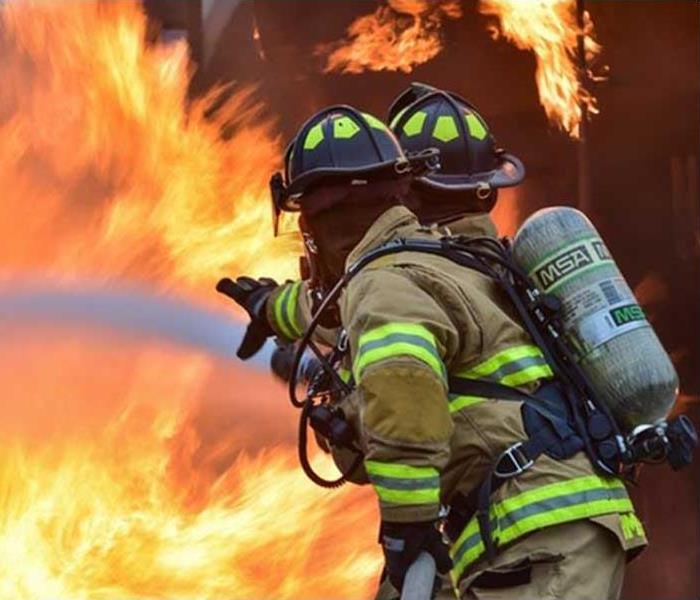 Home fire restoration Long Island, NY - Call the pros at SERVPRO East Meadow / Wesbury
Home fire restoration Long Island, NY - Call the pros at SERVPRO East Meadow / Wesbury
With such cold and blustery weather, hibernation seems like a good idea. However, spending more time at home trying to stay warm brings some risks along with it. The winter season is fire season due to heavier indoor use of kitchen, electricity, furnaces, candles, space heaters, fireplaces and others. All these appliances enhance the risk of accidental fires, as stated by the National Fire Protection Agency (NFPA). Heating and cooking are identified as the two leading causes of home fires in winter. In order to avoid such great mishaps or fire accidents, which also often result in casualties or injuries, every home owner must be aware of why winter is HOME FIRE SEASON!
Home Heating
Home heating systems, boilers and furnaces are one of the primary causes of home fires, and related injuries and deaths in the U.S. homes during the winter season. Most of these cases are seen in the peak winter months - December, January and February. Space heaters are the most dangerous, causing the highest amount of home heating fires. Accounting for two out of every five home fire cases. Therefore, space heaters must be used carefully and never be left unattended.
Carbon Monoxide
Carbon monoxide, also called the invisible killer, is a colorless, odorless gas that is produced as a result of fuel burning like propane, coal and wood. In homes, heating and cooking appliances that burn fuel, are potential generators of carbon monoxide. Such incidents are usually seen during winter months in residential buildings.
Winter storms
Most homes in the U.S. are susceptible to winter storms, which may lead to risky and life-threatening conditions. Extreme cold, downed trees, frozen pipes, icy road conditions can all put havoc on one’s daily routine. This results in overwhelmed usage of heating equipment, and thus, higher chances of home fires.
Generators
A portable generators is indeed a great solution in case of power outages, yet a lot of homeowners don’t know that improper use of this equipment can be extremely hazardous. Some of the most common risks associated with portable generators include carbon monoxide poisoning, fire hazards and electrical shock. As revealed by Consumer Product Safety Commission (CPSC) report of 2013, 50 percent of generator related home fires happen in the coldest months of the year, from November till February.
Candles
December has been observed as the peak time of the year for home fires due to candles. The top four days for candle fires in December include Christmas, Christmas Eve, New Year’s Day, and New Year’s Eve. Every year, on average, 25 home candle fires cases are reported each day.
Electricity
Electrical appliances have also become one of the major causes of home fires in the U.S. Around 50 percent of all home electrical fires cases are based on lighting equipment or electrical distribution, while the rest are based on other types of appliances such as dryer or washer fans, and stationary or portable space heaters.
Cooking
Guests and family members tend to be in the kitchen together for meals, but it may turn out to be the most dangerous room in the home if you don't follow safe cooking practices. Hasty use of cooking equipment, especially stovetops and ovens, are leading causes of home fires and related injuries in the United States. Always be alert and maintain your focus while using stove. Don’t allow children near any heating device or electrical appliances.
Following these precautions and keeping your buildings ready to face winters, can help a great deal in making your homes safe from accidental home fires. If you or anyone in your neighborhood is encountering any problem that may lead to fire, call the expert home emergency restoration professionals at SERVPRO of East Meadow / Westbury right away.
Types of Storms (3)
1/26/2017 (Permalink)
Due to the cold weather of winter, an area may experience ice storms. Ice storms produce freezing rain that coats everything in its path with a layer of glaze ice. Generally speaking, if a storm causes accumulation of more than a quarter inch on exposed surfaces, the storm can be classified as an ice storm.This type of accumulation can cause broken tree branches, power outages and other hazardous conditions. From 1982 to 1994, ice storms were more common than blizzards and averaged 16 per year. They are not violent storms, but instead commonly perceived as gentle rains occurring at temperatures just below freezing. For this reason people may be unaware of the danger if it happens overnight. In addition to hazardous driving or walking conditions, branches or even whole trees may break from the weight of ice. Falling branches can block roads, tear down power and telephone lines, and cause other damage.
Types of Storms (4)
1/26/2017 (Permalink)
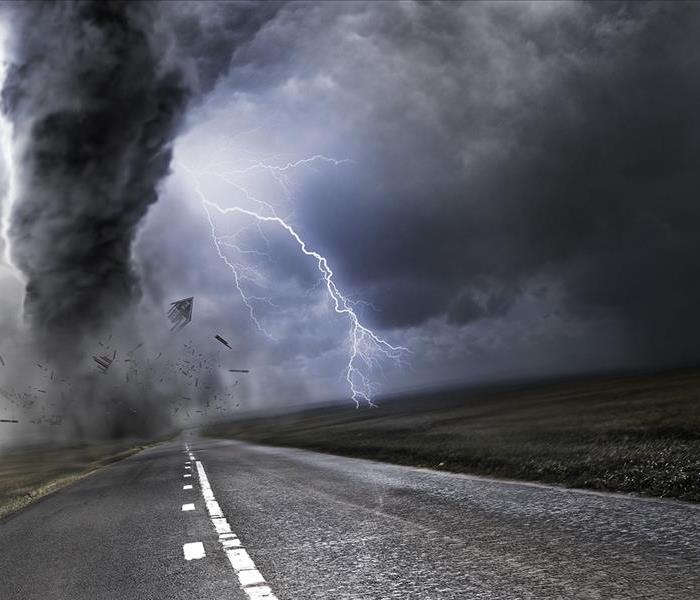
Another type of storm is the commonly known tornado. For many areas around the U.S., damage from severe tornadoes presents a very real threat. Most tornado damage is done by high winds, with recorded speeds exceeding 300 MPH and the flying debris propelled by these fierce winds. The most damage from tornadoes happens in "tornado alley" - a part of the U.S. that includes Oklahoma, Texas, Kansas, Missouri, etc. A tornado is a violently rotating column of air that spins while in contact with both the surface of the Earth and a cumulonimbus cloud or, in rare cases, the base of a cumulus cloud. They are often referred to as twisters, whirlwinds or cyclones. Tornadoes can cause very minimal damage, such as ripping siding off of homes, to catastrophic damage, which can literally lift homes off their foundations. The type and severity of tornadoes are classified using the Fujita scale. On this scale, tornadoes are rated from F0 to F5, with F5 being the most dangerous and deadly.
Types of Storms (5)
1/26/2017 (Permalink)
Lightning storms can be very dangerous and are often forgotten about. You may be surprised to learn that lightning is a major cause of storm damage in many areas around the country. The National Lightning Safety Institute estimates the cost of lightning damage in the $5 to $6 billion dollar per year range. Lightning that hits trees and the ground is a common cause of wildfires, structure fires, property damage and power outages. 8.6 Million. That's how many times, on average, lightning strikes the Earth every day. That's about 100 times each second. According to a 2004 study by lightning researchers, Dr. E. Phillip Krider and Kenneth Kehoe, the U.S. alone is hit about 30 million times each year by lightning. With temperatures up to four times as hot as the sun (up to 50,000 degrees Fahrenheit), concentrated into a channel often as slender as a pencil, it's no wonder lightning can be destructive and deadly.
Types of Storms (6)
1/26/2017 (Permalink)
The next type of storm is Heavy Snow/ Blizzards. Blizzards are severe winter storms that combine heavy snowfall, with high winds and freezing temperatures. The combination of cold, wind and snow damages homes, businesses and automobiles. Heavy snow can produce dangerous conditions, including roof collapse. Blizzards generally cause blinding snow with near zero visibility, deep snow drifts and dangerously cold temperatures. When a blizzard occurs, it is important to be prepared. At home and in the workplace, the main concerns are shortage of supplies such as food and water and loss of heat, power or telephone service. Items such as flashlights, extra batteries, extra food and water, first aid supplies and an emergency heat source should be kept in an emergency kit. It is also important to keep a winter survival kit in the car.
Types of Storms (7)
1/26/2017 (Permalink)
Not many know about this type of storm but its called a derecho storm. A derecho is a large, violent, fast-moving, complex of thunderstorms that follow one another along a path of at least 240 miles, with wind gusts of at least 58 mph. Although derechos are very difficult to predict, they often form along the boundary of a large, hot air mass near a jet stream air current. Derechos can produce winds as violent as a hurricane or tornado and cause similar damage, but they are not confined to the coastal areas of the United States. While derechos can happen at any time of the year during the day or the night, typically, derechos happen in warm weather, during June and July, and in the Northern Hemisphere.
Types of Storms (8)
1/26/2017 (Permalink)
The next type of storm is a tropical storm. Tropical storm is a type of storm system that develops in tropical environments. These storms are characterized by extremely low pressure systems and high speed, swirling winds. In order for a storm to be classified as a "tropical storm", a specific set of circumstances must exist. In order to be a tropical storm, the wind speed must be between 39 and 73 miles per hour. Lower or higher wind speeds would be another classification (lower: tropical depression, higher: hurricane).
Tropical storms are a very powerful storm system, much like a hurricane. Although they are slightly less powerful than a hurricane, they can still cause tremendous amounts of damage. In the Southeastern U.S. alone, there has been more than $6 billion in damage in the storms that have hit since 1979.
The two primary causes of damage during a tropical storm are wind and water.
- Wind Damage - high winds, flying debris, etc.
- Water Damage - heavy rain, storm surges, large waves and swells, mud slides
Types of Storms (8)
1/26/2017 (Permalink)
Another type of storm is a hurricane. A Hurricane is the most powerful classification given to a tropical cyclone. Characterized by low barometric pressure systems, extremely high winds, heavy rainfall and storm surges and swells - hurricanes that make landfall can be extremely destructive.
Hurricanes are broken up into categories depending on their severity. Below is a simple explanation of how hurricanes are categorized:
- Category 1 - Wind speeds between 74 and 95 MPH with likely storm surges up to 5 feet
- Category 2 - Wind speeds between 96 and 110 MPH with likely storm surges up to 8 feet
- Category 3 - Wind speeds between 111 and 130 MPH with likely storm surges up to 12 feet
- Category 4 - Wind speeds between 131 and 155 MPH with likely storm surges up to 18 feet
- Category 5 - Wind speeds greater than 156 MPH and likely storm surges up to 19+ feet
A hurricane is made up of several parts including the "Eye" which is the low pressure center of the storm. This part of the storm is usually an extreme contrast to the turbulence of the actual storm where wind conditions are calm with a clear sky above. Outside the "Eye" is the "Eyewall". The "Eyewall" is the storm area surrounding the eye which usually contains the most intense thunderstorms, the heaviest rain, and the greatest turbulence.
Types of Storms (1)
1/17/2017 (Permalink)
For the next couple of days, the blog will be updated daily with all different types of Storms. We will start with the common hail Storms. Almost every US resident has already experienced a severe hailstorm and witnessed the damage hail can cause to homes, automobiles, businesses, and other property. It does the greatest amount of damage to the exterior of your home or property. Common types of damage caused by hail are roof damage, siding damage, shingle damage, window damage and automobile damage. Hail can grow as big as golf balls, baseballs, and even soccer balls. Hail larger than 0.75 inches is considered large enough to cause serious damage in the United States. Per NOAA, hailstones can fall at speeds up to 120 mph. The largest hailstone ever recorded in the United States was 8 inches in diameter, weighing nearly 2 pounds. This hailstone was recovered in Vivian, SD on July 23, 2010.
Types of Storms (2)
1/17/2017 (Permalink)
A very common type of Storm is a thunderstorm. Almost everyone has experienced a thunderstorm. Thunderstorms are storms that produce lightning and thunder. Thunderstorms can produce a variety of additional effects, such as high winds, hail, intense rain, sleet, and snow; but they do not necessarily have to produce precipitation. Thunderstorms come in many forms. Dry thunderstorms, or those that do not precipitate, often cause wildfires from lightning strikes in places like Colorado. The largest type of storm cell, a supercell, produces many hazardous weather conditions, including hail more than 4 inches in diameter and tornadoes.
Damage commonly occurs to the following parts of houses and other structures.
- Roof Damage
- Window Damage
- Siding Damage
- Exterior Appliance Damage
The National Weather Service recommends several precautions that people should take if thunderstorms are likely to occur:
- People should know the names of local counties, cities, and towns, as these are how warnings are described.
- Monitor forecasts and know whether thunderstorms are likely in the area.
- Be alert for natural signs of an approaching storm.
- Cancel or reschedule outdoor events (to avoid being caught outdoors when a storm hits).
- Avoid open areas like hilltops, fields, and beaches.




 24/7 Emergency Service
24/7 Emergency Service
